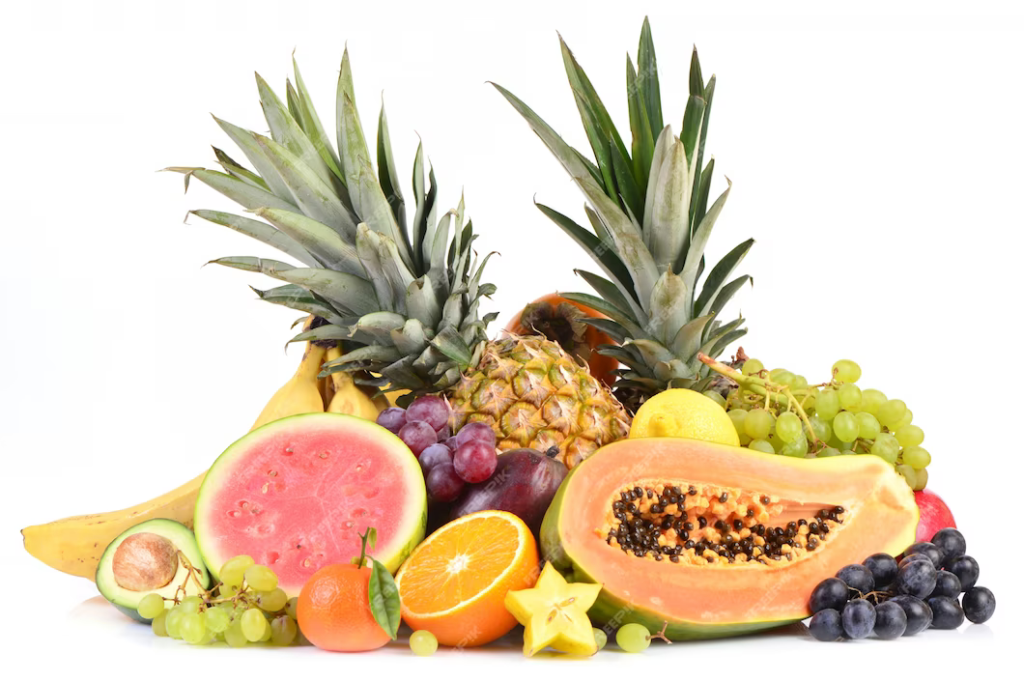How Do I Follow a Healthy Diet Pattern?
The American Heart Association recommends
a healthy eating pattern that emphasizes
vegetables, fruits and whole grains. It includes
skinless poultry, fish and legumes (beans, peas and
lentils); nontropical vegetable oils; and nuts and
seeds. Limit your intake of sodium, sweets, sugarsweetened beverages and red and processed meats.
Everything you eat and drink is part of your diet
pattern. Make healthy choices today and they’ll
add up to healthier tomorrows for you!

Vegetables
- Eat a variety of colors and types, especially deeply
colored vegetables, such as spinach, carrots and broccoli. - All vegetables count, including fresh, frozen, canned or dried. Look for vegetables canned in water. For frozen vegetables, choose those without high-calorie sauces or added sodium or sugars.
- Examples of a portion per serving are: 2 cups raw leafy greens; 1 cup cut-up raw or cooked vegetables (about the size of a fist); or 1 cup 100% vegetable juice (no salt added).


Fruits
- Unsweetened fruits are best. Eat a variety of colors and types, especially deeply colored fruits, such as peaches and berries.
- Eat whole fruits to get all the nutrients (such as dietary fiber) that can be missing in some juices.
- Examples of a portion per serving are: 1 medium fruit (about the size of a baseball); ¼ cup unsweetened dried fruit; ½ cup fresh, frozen or canned fruit (unsweetened frozen or canned in its own juice or water); or ½ cup 100% fruit juice.
- For beverages, look for 100% fruit juice. Avoid sugar sweetened beverages. They’re high in calories and low in nutrients.
Whole grains
- At least half of your servings should be high-fiber whole grains. Select items like whole-wheat bread, wholegrain crackers and brown rice. Look at the ingredients list to see that the first ingredient is a whole grain.
- Aim for about 25 grams of fiber from foods each day. Check the Nutrition Facts label for dietary fiber content.
- Examples of a portion per serving are: 1 slice bread; ½ cup hot cereal; 1 cup cereal flakes; or ½ cup cooked rice or pasta (about the size of a baseball).


Protein foods
- Mix up your protein sources. Beyond fish, poultry and lean or extra-lean meats, try eggs and soy products, such as tofu.
- Eat at least 8 ounces of non-fried fish (particularly fatty fish) each week. Fatty fish, such as salmon, mackerel, herring, lake trout, sardines and albacore tuna, are high in omega-3 fatty acids.
- Remove skin from poultry before eating.
- Trim all visible fat from meats before cooking.
- Limit processed red meats, such as bacon, salami, ham, hot dogs and sausage.
- Examples of a portion per serving are: 2 egg whites;
¾ cup cooked, flaked fish; or half a chicken breast. A
3-ounce portion is about the size of a deck of playing
cards.
How To Follow a Healthy Diet Pattern?
Nuts, seeds and legumes
- Add many different types of beans (black, kidney, pinto, cannellini and navy, for examples) to your soups, salads and pasta dishes.
- Try sprinkling unsalted, dry-roasted nuts over your salads. Use nuts in stir-fries. Stir them into yogurt.
- Examples of a portion per serving are: ½ ounce unsalted nuts; ½ ounce unsalted seeds; ½ cup cooked legumes (beans, peas, chickpeas or lentils); or 1 tablespoon lows odium or no-salt-added peanut butter.
Low-fat or fat-free dairy products
- Use low-fat (1%) and fat-free milk. 2% milk is not low fat.
- Choose low-fat or fat-free yogurt with no added sugars.
- Choose low-fat or fat-free cottage cheese. Look for the lowest sodium product you can find.
- Cheeses (low-fat or fat-free) should have no more than 3 grams of fat per ounce and no more than 2 grams of saturated fat per ounce.
- Examples of a portion per serving are: 1 cup milk or yogurt or 1½ ounces fat-free or low-fat cheese (about the size of 3 stacked dice).

